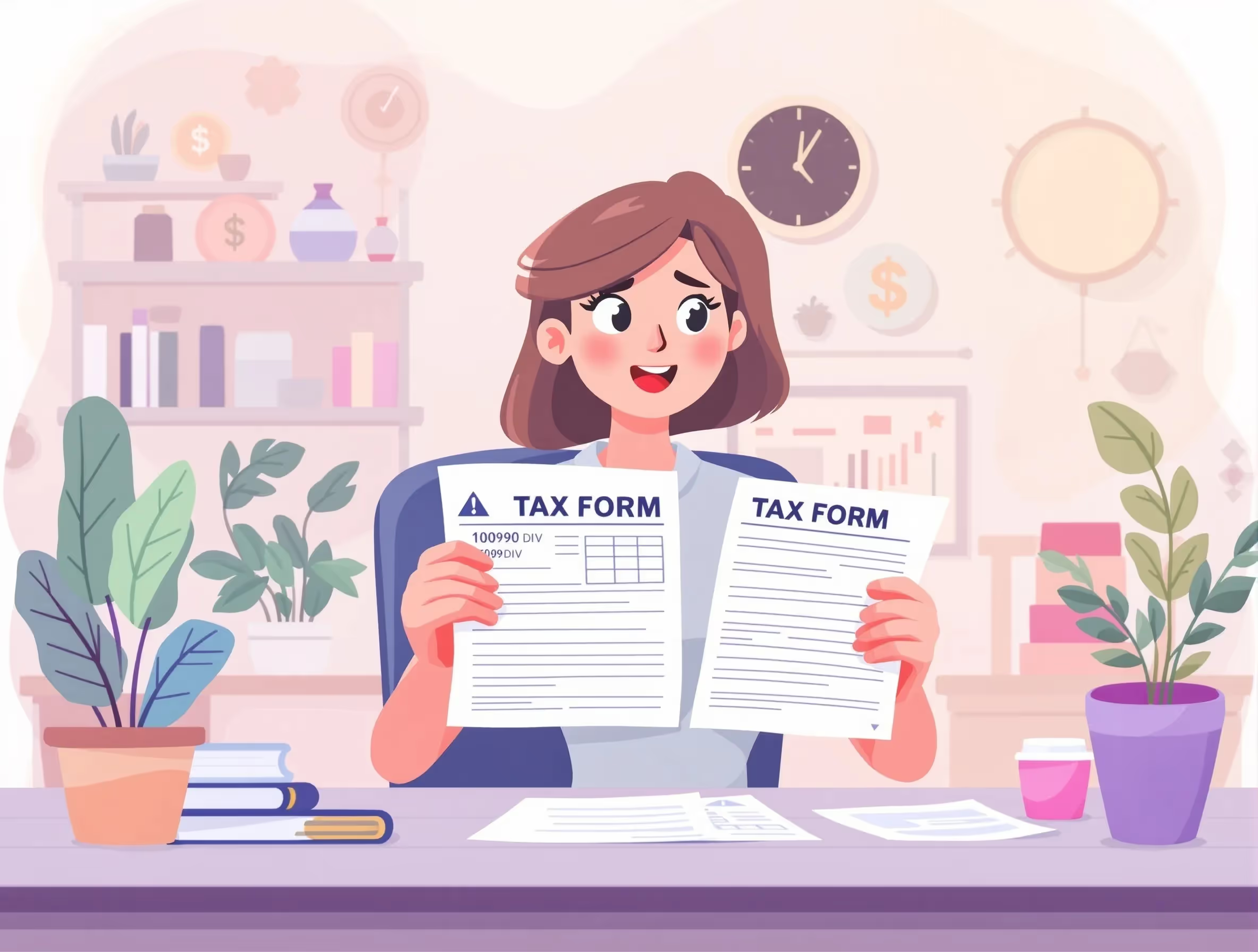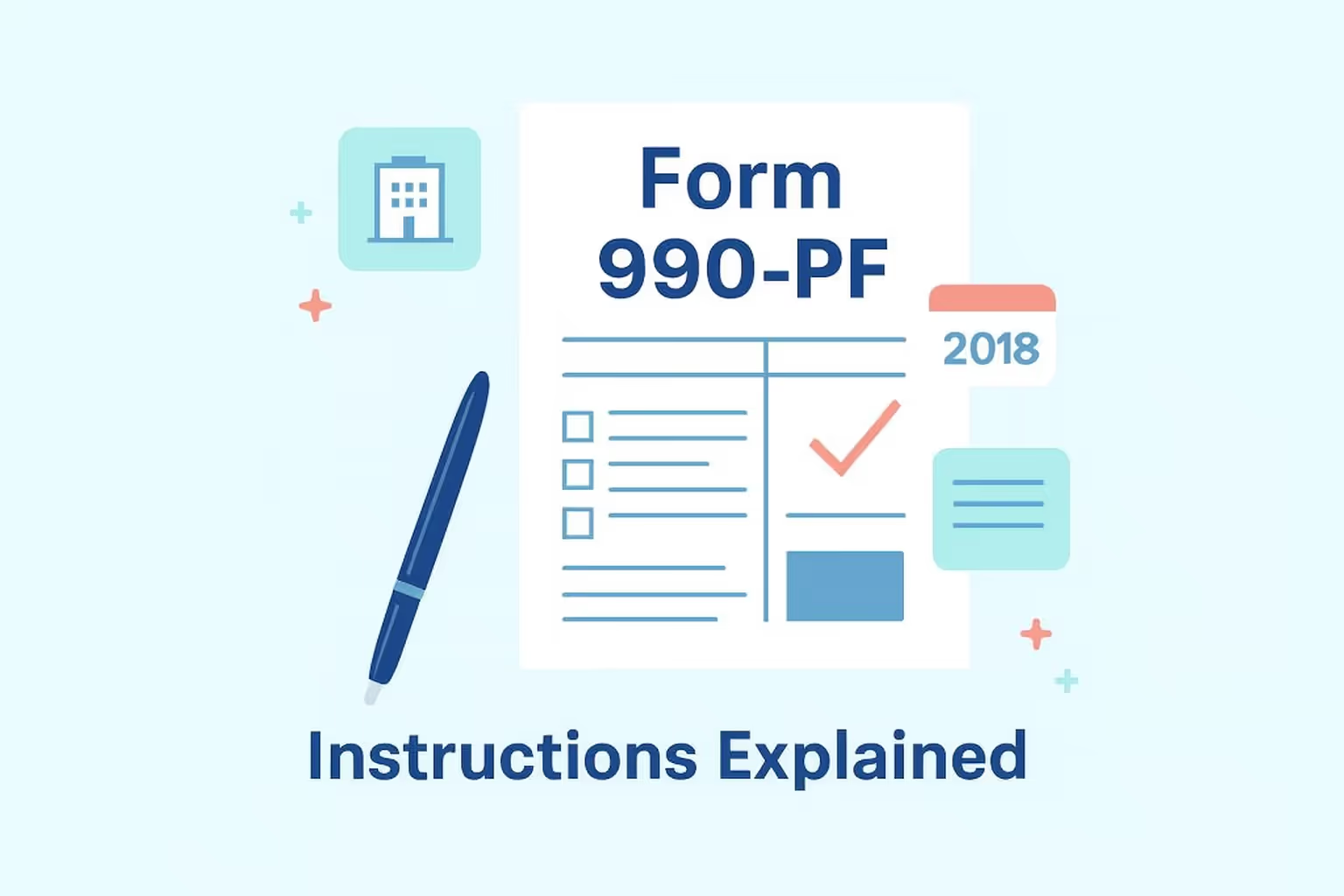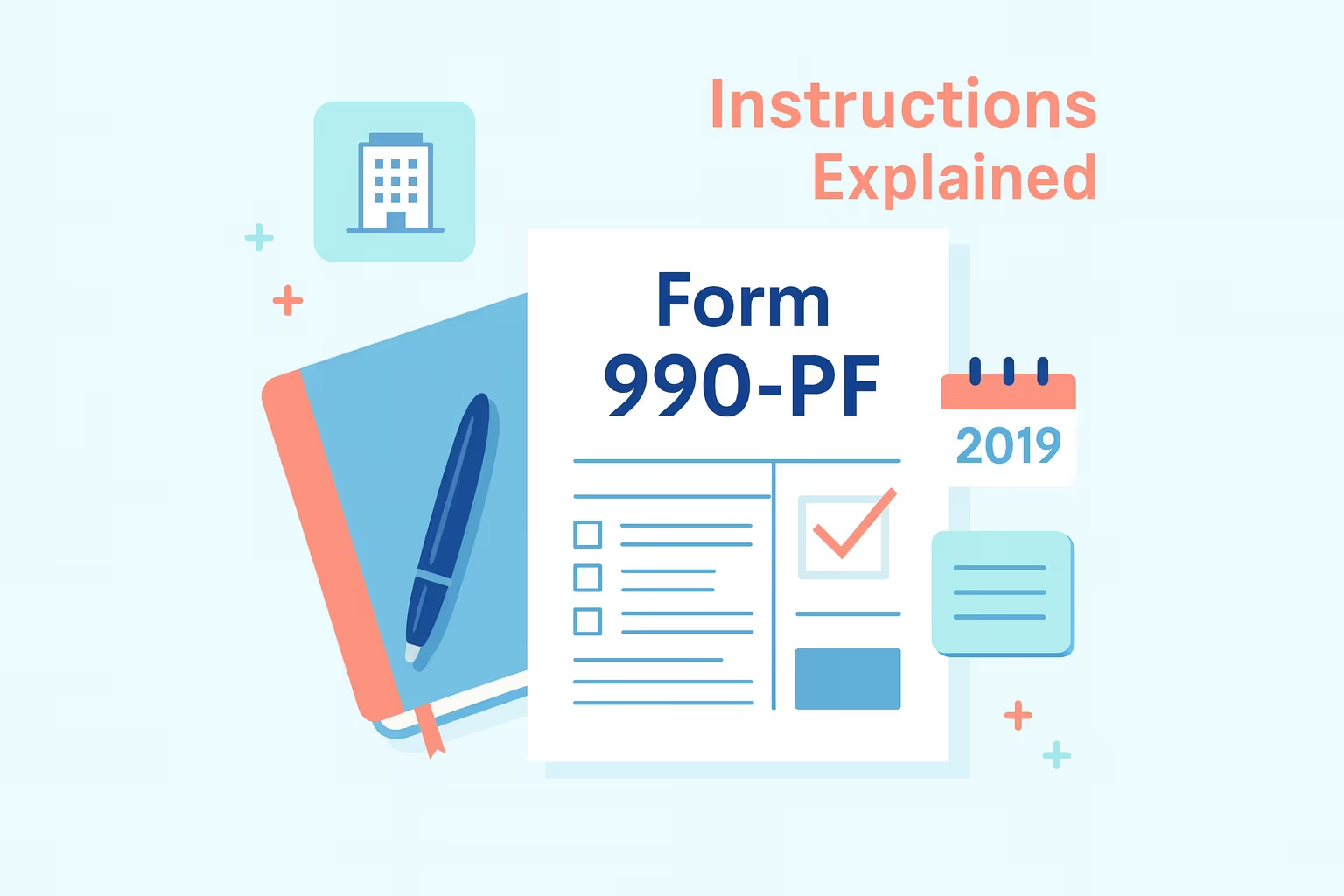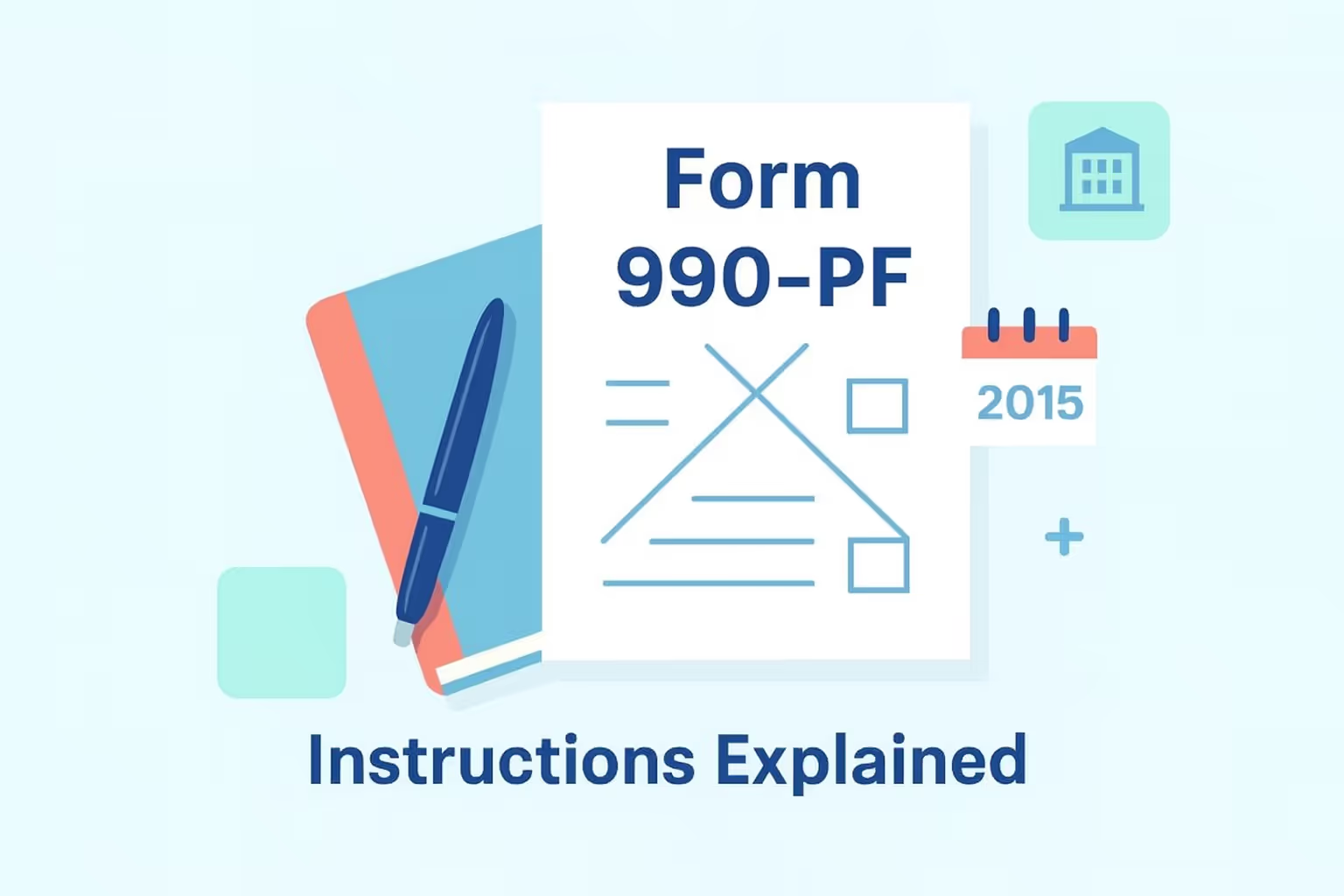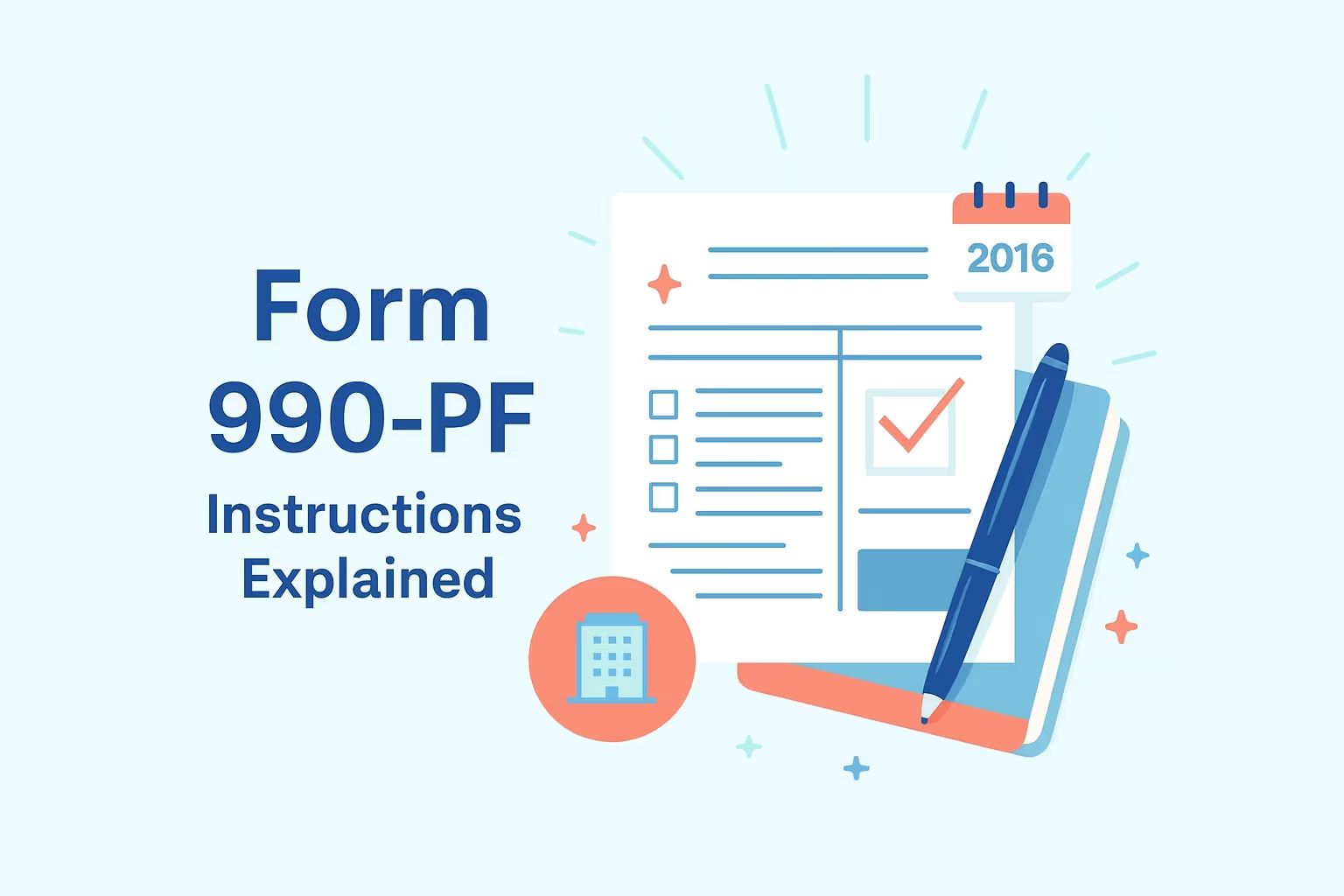IRS Form 990-PF (2016): Return of Private Foundation

What IRS Form 990-PF (2016) Is For
Form 990-PF is the annual return that every private foundation must file to report net investment income, charitable distributions, administrative expenses, and asset activity for the tax year beginning in 2016. It enables the Internal Revenue Service to review excise tax calculations, undistributed income, grants, and net assets, while meeting public inspection requirements for foundations and certain non-exempt charitable trusts.
When You’d Use Form 990-PF for 2016
You use the 2016 Form 990-PF when your private foundation or nonexempt charitable trust missed the original deadline or needs to correct investment income, capital gains, rental income, or philanthropic purposes reporting. You may also amend when adjusted gross income amounts, expenses, or fund balance items from the previous year require updated documentation.
Key Rules or Details for 2016
- Excise tax calculation: The IRS applies a 2 percent excise tax on net investment income unless certain thresholds allow the foundation to qualify for the reduced 1 percent rate. This requires accurate reporting of income, deductions, and grants based on the previous year.
- Minimum charitable distributions: Private foundations must distribute about 5 percent of average net assets for charitable purposes, including grants, fees, and administrative expenses. This rule helps ensure funds support qualifying activities rather than accumulate without public-benefit use.
- Estimated tax responsibilities: Foundations owing excise tax must pay quarterly estimated tax based on income, dividends, interest, capital gains, and money received from financial instruments. These payments mitigate the risk of penalties associated with the taxable year.
- Public inspection requirements: Form 990-PF must be available for public review, showing assets, fund balance, wages, expenses, investments, and amounts paid for charitable distributions. This requirement applies whether the foundation files as a private foundation or is treated similarly under trust rules.
Browse more tax form instructions and filing guides in our Forms Hub.
Step-by-Step (High Level)
Step 1: Gather financial and grant records
Collect statements for stocks, bonds, mutual funds, and other financial instruments, along with documentation for grants, wages, expenses, dividends, and investment income. This information supports accurate reporting for the tax year and verifies fund balance totals, adjustments, and deductions.
Step 2: Use the correct 2016 form
Download the official 2016 Form 990-PF because each taxable year includes different lines, examples, and instructions. Using the wrong version may cause issues with income reporting, asset values, or excise tax sections, which may result in notices or additional tax.
Step 3: Calculate net investment income and tax
Enter dividends, interest, rental income, unemployment compensation, capital gains, tax-exempt interest, and other amounts considered net investment income. These numbers determine the net investment income tax and reveal the foundation’s overall tax liability for the year.
Step 4: Review charitable distributions
Record charitable distributions, administrative expenses, and grants made for charitable purposes. Include amounts supporting mission programs, fees paid for qualifying person activities, and funds used to report philanthropic distributions that satisfy payout rules for private foundations.
Step 5: Attach required schedules
Attach schedules for contributors, self-dealing, foreign country investments, and prior years’ asset activity. Additional explanations may be needed when foundations hold complex investments, report changes in fund balances, or demonstrate tax-based adjustments across the previous year.
Step 6: File the return
Mail the completed form or e-file when required, keeping copies for internal records, state agencies, and public reference. Retain prior years’ returns to show consistent filing patterns, support future deductions, and reduce the chance of penalties during tax season.
Learn more about federal tax filing through our IRS Form Help Center.
Common Mistakes and How to Avoid Them
- Applying the wrong excise tax rate: Foundations sometimes claim the reduced rate without meeting distribution requirements. Reviewing payout totals from the previous year ensures the correct rate and helps avoid penalties and filing corrections.
- Misreporting investment income: Dividends, interest, or capital gains from funds, stocks, or bonds may be misclassified. Verifying each investment source helps prevent errors that can affect taxable income and estimated tax calculations.
- Incorrect charitable distribution reporting: Missing grants or administrative expenses can alter payout calculations. Checking every charitable distribution helps maintain compliance and ensures amounts paid for charitable purposes are properly documented.
- Missing state-level filing requirements: Many states require copies of Form 990-PF. Sending required filings on time helps avoid penalties and ensures the foundation remains compliant with state tax requirements.
- Leaving required lines blank: Incomplete entries may cause delays or IRS correspondence. Entering “0” or “N/A” when appropriate confirms that the foundation addressed each item intentionally.
Learn more about how to avoid business tax problems in our guide on How to File and Avoid Penalties.
What Happens After You File
The IRS usually processes Form 990-PF within several weeks for paper filings, though amended versions may take longer. The agency may issue balance-due notices, estimated tax reminders, or questions about income, deductions, or assets. Reasonable cause relief may apply if the foundation demonstrates responsible efforts to avoid penalties.
FAQs
How does IRS Form 990-PF 2016 handle investment income reporting?
Form 990-PF for 2016 requires foundations to report dividends, interest, capital gains, rental income, and tax-exempt interest as part of net investment income. Accurate financial documentation must support these items, which impact the excise tax.
How does modified adjusted gross income affect capital gains on Form 990-PF?
Modified adjusted gross income helps determine whether income items must be included in calculations tied to investment income or capital gains. Although MAGI primarily applies to individuals, certain trust-related amounts may impact foundation reporting requirements.
Does adjusted gross income affect gross income sections on 990-PF?
Adjusted gross income is not directly reported on Form 990-PF; however, similar concepts apply, as the foundation must track gross income items such as dividends, interest, compensation, and profit from the sale of assets. These items help determine the total net investment income.
Do private foundations need estimated tax payments when income tax applies?
Private foundations must pay estimated tax when excise tax or income items indicate tax liability for the year. Timely payments help avoid penalties and ensure the IRS receives appropriate amounts throughout the taxable year.
How does excise tax interact with administrative expenses on Form 990?
Administrative expenses reduce net investment income, potentially lowering the excise tax for the year. Foundations must ensure these expenses qualify and are documented clearly to satisfy Internal Revenue Service reporting standards.
What steps help avoid penalties when filing 990-PF late?
Filing promptly, paying any tax owed, and explaining reasonable cause help avoid penalties. Maintaining records from prior years and confirming investment income totals also supports accurate reporting and reduces the risk of errors.
When must a foundation file Form 990 if prior years show undistributed income?
A foundation must file Form 990-PF each year, including years with undistributed income from prior years. These amounts must be tracked carefully because they may trigger additional tax or payout adjustments.
For more resources on filing or understanding prior-year IRS forms, visit our guide on Nonprofit & Exempt Organization Forms.





